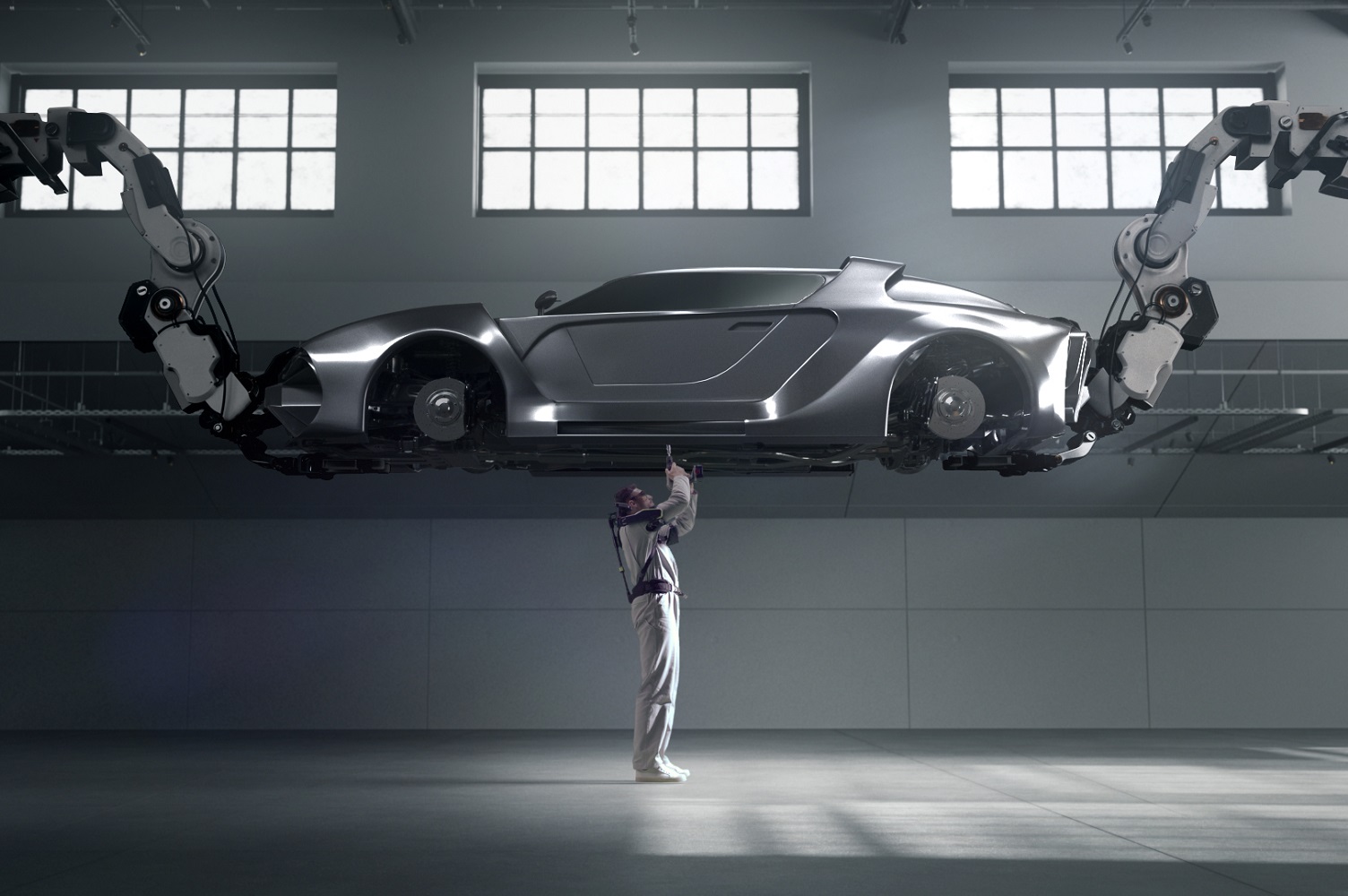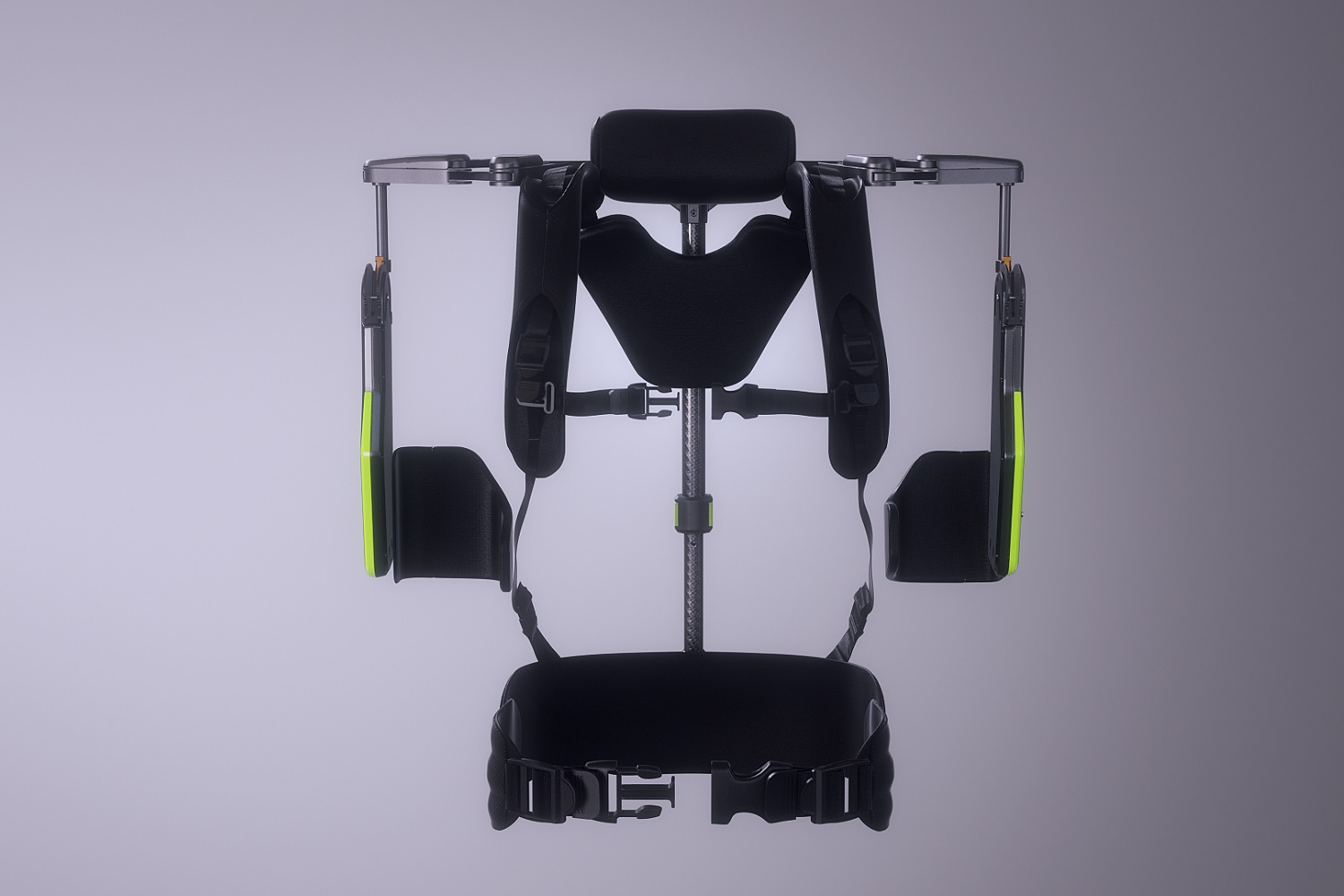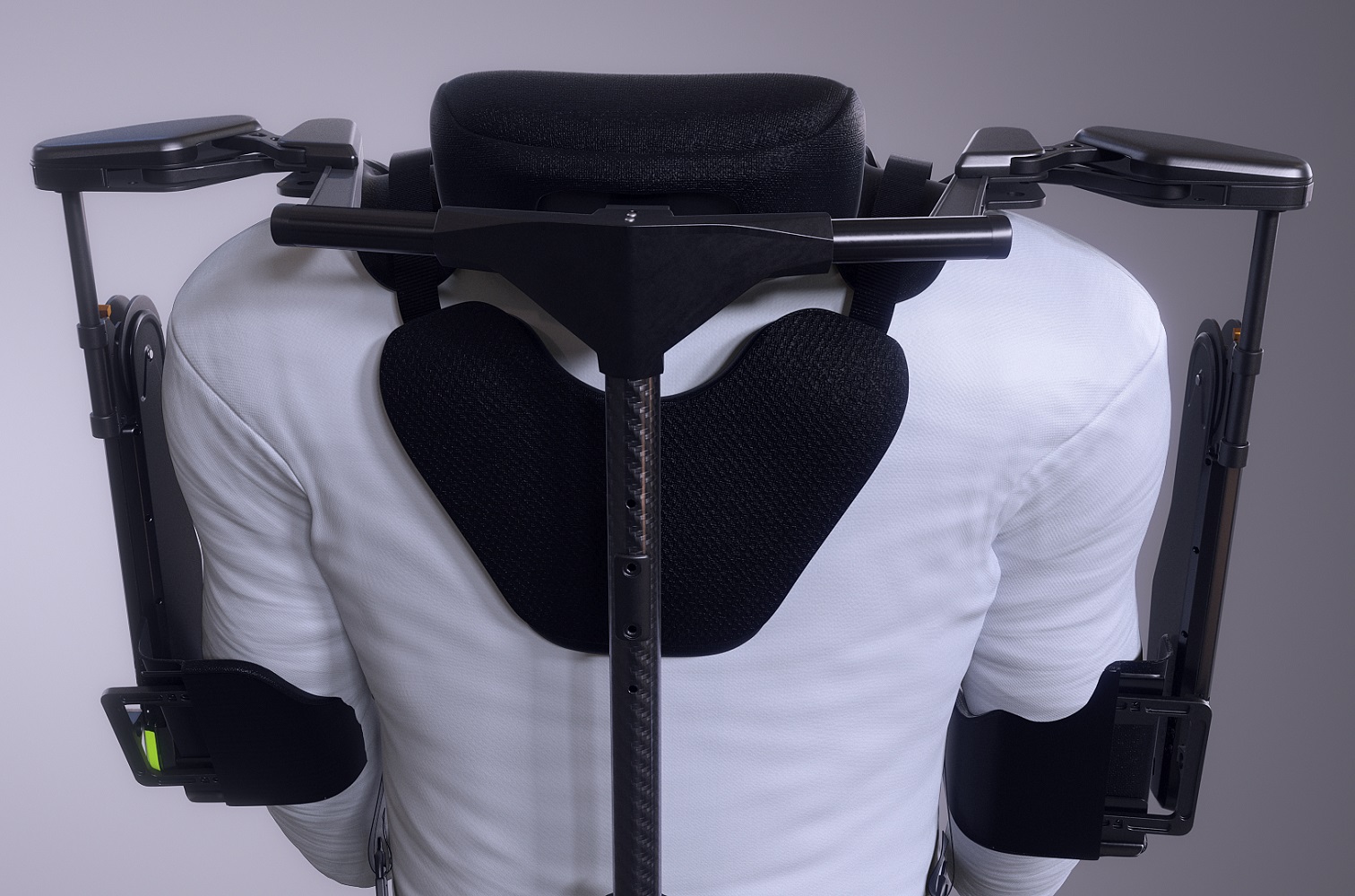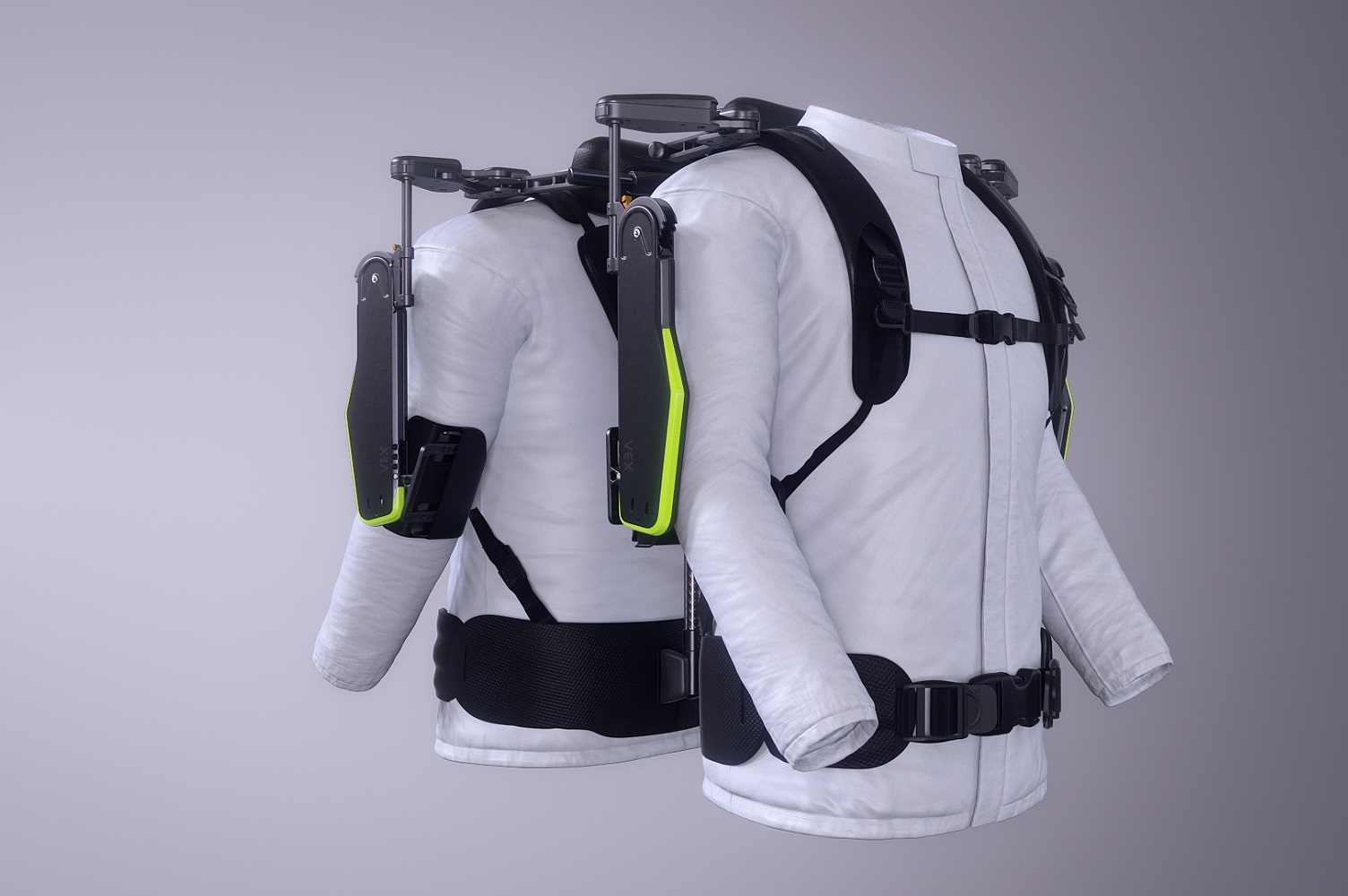You no longer have to be a grasshopper, a cockroach, or a crustacean to wear an exoskeleton. Hyundai developed a wearable robot called Vest Exoskeleton (VEX) that greatly reduces the amount of fatigue workers feel after spending long hours on the assembly line. It’s real, and it could help build your next Hyundai.
Like other robo-suits, the VEX resembles a prop from a science fiction film, and it’s as futuristic as it looks. It takes the form of a backpack-like device that weighs approximately 5.5 pounds and adjusts to fit a variety of different body heights and widths. Working without a battery, it imitates the movements of the human body’s joints, and reduces the effort required to lift a part, for example, or to tighten a bolt with your hands in the air.
Workers can choose from six degrees of assistance; the VEX delivers up to 12 pounds of force. Engineers developed it primarily for the men and women whose job is above them, like those who install brake lines or exhaust parts while the car is up on a lift. Hyundai tested the device at two of its factories in the United States, and it received hugely positive feedback from the people who wore it. It keeps its promises of making a strenuous job more bearable.
If this sounds familiar, it might be because Hyundai rivals Ford and General Motors have also experimented with exoskeletons in the past. The VEX is between 22 and 42% lighter than competing products, according to the company, and it’s also cheaper. The firm claims rival products cost about $5,000 apiece, while the VEX starts at approximately $3,500.
Hyundai’s robot-building division will start building the VEX in December 2019, and the car-building part of the company is considering making it available in all of its factories worldwide. It’s part of Hyundai’s effort to improve working conditions in its factories. There’s no word yet on whether consumers will be able to buy one, though.
The company pledged to put a greater focus on robotics in the coming years. It notably plans a hotel service robot, a sales service robot, an electric vehicle charging manipulator, and what it calls a robotic personal mobility solution.







